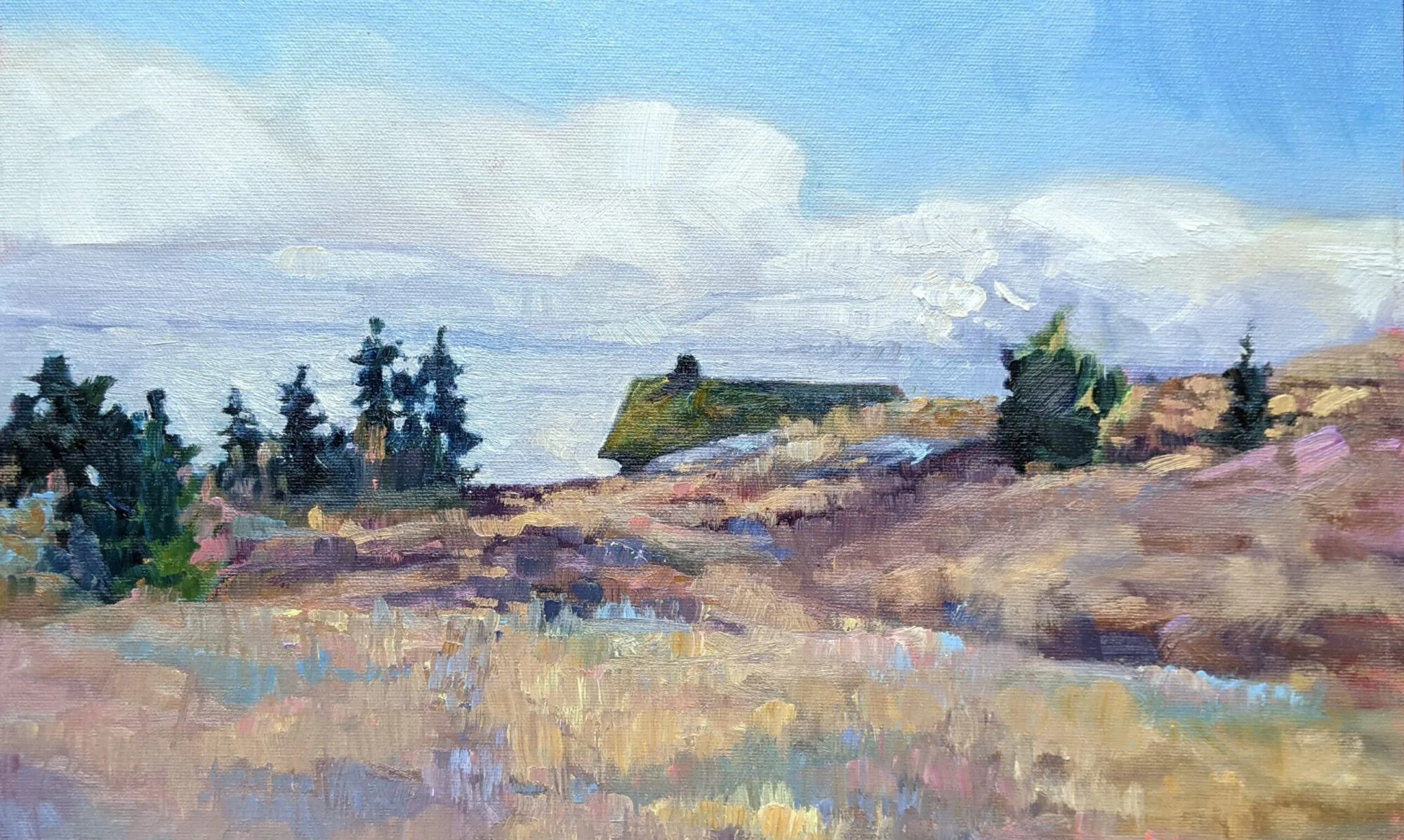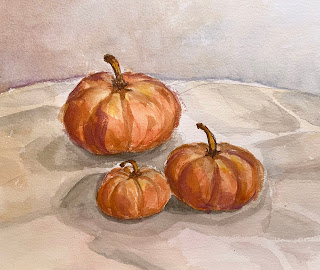We’re painting at Goodwood Plantation today. It has more than enough history, mystery and tragedy for any creepy holiday.
 |
| Goodwood Plantation, by Natalia Andreeva |
In 1837, Hardy B. Croom, his wife, three children and maternal aunt perished on a steamship in a hurricane on the Outer Banks. Croom left no will; that created a legal mess that took twenty years to untangle. Croom’s business partner was his brother, Bryan Croom. Bryan assumed that, as the closest male heir to his brother, he automatically netted the spoils.
His former sister-in-law, however, had left behind a mother and other relatives. Contrary to modern belief, 19th century women did have some property rights, at least in North Carolina, which the courts determined was the Hardy Croom family’s legal residence. At first, Mrs. Smith meekly asked Bryan Croom for some compensation. Croom refused. She went to court; twenty years later, she prevailed. Much of the estate reverted to her.
 |
|
Awful wreck of the Steam Packet Home: on her passage from New York to Charleston, hand-colored lithograph, showing the wreck in October 1837 during the Racer’s hurricane. The entire Croom family perished. |
The property was by then known as Goodwood Plantation. Hardy Croom had started a modest frame house on the site, but it was primarily a working cotton plantation. Bryan Croom had built a 10,000 square foot antebellum mansion. Mrs. Smith, having no interest in moving to the Florida panhandle, sold the whole kit-and-caboodle. It was purchased by a transplanted New Yorker, Arvah Hopkins. He and his wife paid an eye-watering $52,862 for the estate, 1576 acres of land and 41 slaves.
Hopkins had settled in Tallahassee as a young man. He must have done well at a young age, because he married the daughter of Florida’s last territorial governor and took his place among Tallahassee’s elite. The Hopkins family brought Goodwood to its peak as a slave-holding estate. Ultimately the Hopkins family farmed 8,000 acres of non-contiguous land on the backs of 200 slaves. Sadly, almost nothing of their history was recorded.
The Civil War changed the labels and little else. Former slaves were now known as tenant farmers or sharecroppers. Goodwood carried on.
 |
| Mrs. Tiers’ watertower and other outbuildings. |
In 1885, the estate was sold to Fannie Tiers. Although she spent only a few months a year in the Deep South, Mrs. Tiers remodeled and renovated the house and outbuildings to her own New Jersey taste. It became less antebellum and more Mount Vernon. She added a water tower, an amusement hall, guest cottages, servant quarters, a heated swimming pool, tennis courts and a carriage house. All of these cluster around the elegant old main house like importunate chicks around a hen.
The plantation that once supported Goodwood is long-gone; it’s surrounded now by the very modern campus of Tallahassee Memorial Hospital. Still, it is elegant, quiet and graceful under its canopy of ancient live oaks.
 |
| I added the shack to give some structure to yesterday’s demo painting, but I suppose the long-lost sharecroppers’ cottages probably looked more or less like this. |
We’re painting there today, in our last class of my Find Your Authentic Voice in Plein Air workshop. It’s Friday the 13th, which somehow seems fitting. Goodwood has more than enough history, mystery and tragedy for any creepy date.
Incidentally, the only other Friday the 13th in 2020 was in March. That was the start of our ill-fated trip to Argentina, which was, coincidentally, where I met Natalia Andreeva. It’s a good thing I’m not superstitious.
Natalia, by the way, has continued to make videos of our workshop. I’ve put the most recent above; the rest can be seen here.


































